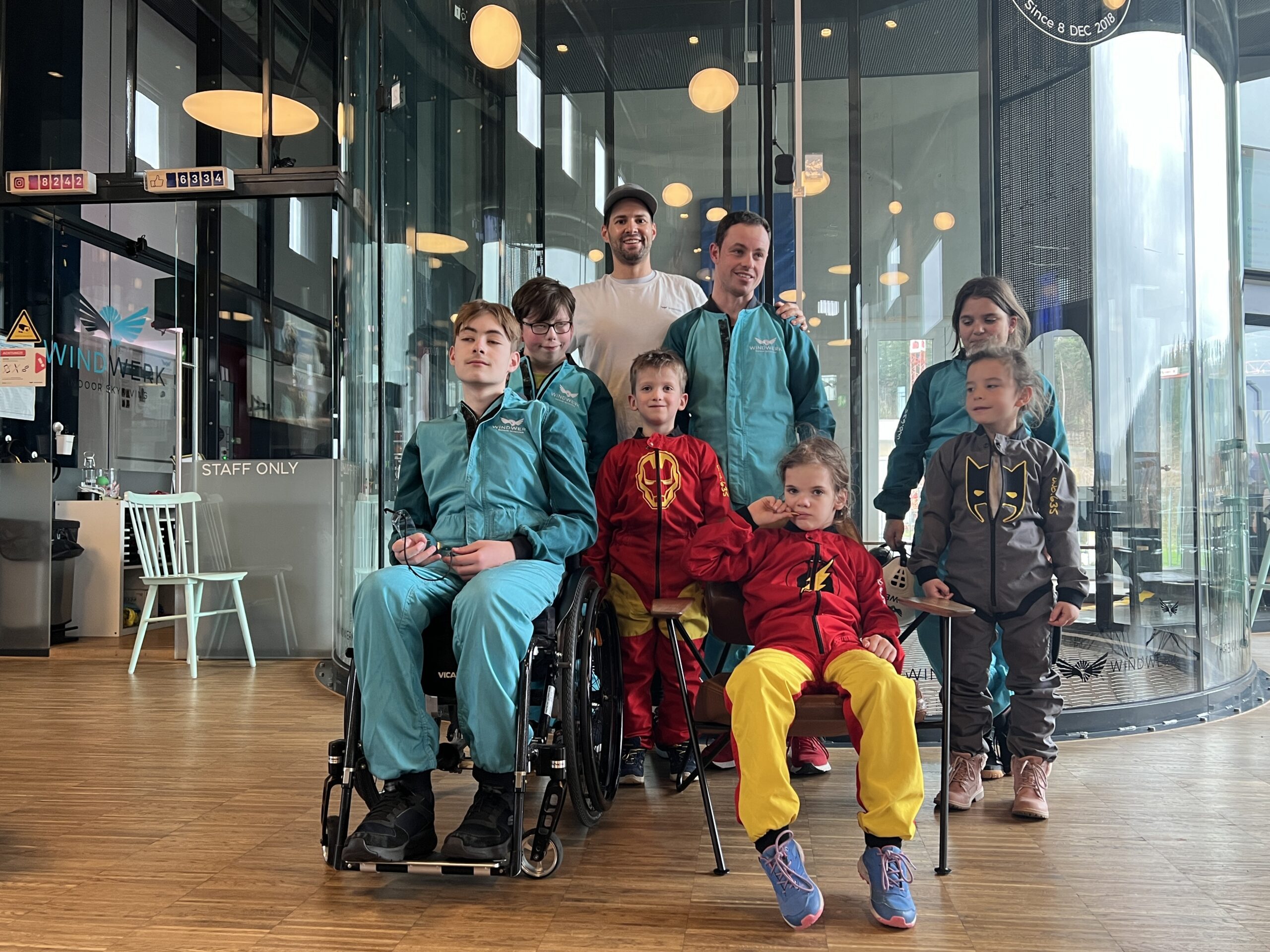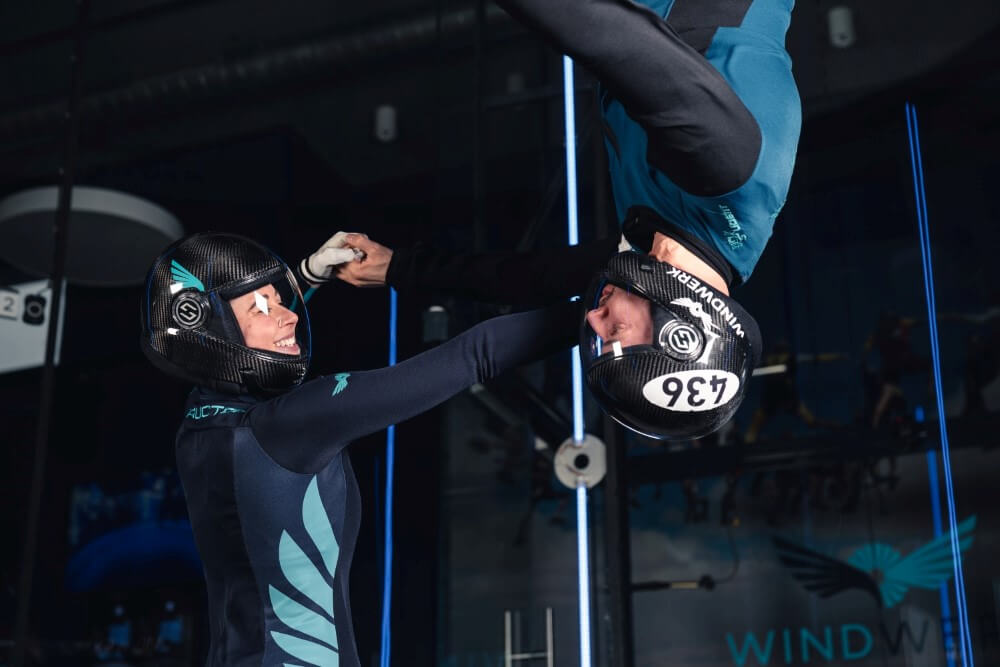Indoor skydiving is an excellent preparation for people who want to learn how to skydive. It allows you to experience the correct movements and the feeling of free fall in a controlled environment. Nowadays, flying in a wind tunnel also plays an important role in the training schedule of experienced skydivers, especially when they take part in competitions.
When you fly in the wind tunnel, you don’t have to worry about checking your equipment, getting out of the plane, altitude control, parachute deployment, landing and packing the parachute, or changing wind and weather conditions. You can concentrate fully on how to control your body in the air. With the help of an instructor, you can practise and repeat movements over and over again, allowing you to concentrate on your flight progress. From a certain level, you can also train on your own. Over time, you will develop the basic body positions and movements required for skydiving, such as a stable body position, turns and forward movements. Indoor skydiving can help you build confidence in the air and familiarize you with the feeling of freefall. For our instructor Adrian Fenner, training in the wind tunnel has a clear added value for freefall:
“I can train and repeat maneuvers without time pressure.”
However, not everything is feasible in the wind tunnel, our instructor Kim Bernhardt points out:
“You can’t perform certain flight maneuvers in a wind tunnel because there simply isn’t enough space. In addition, you often have to ‘brake’ in the wind tunnel because the safety net limits the space downwards and the speed is limited.”
But what clearly speaks in favor of indoor skydiving is that you are completely independent of the weather and can plan your sessions in advance as you wish.
In skydiving, the jump usually involves about 45 seconds of freefall and five minutes under the parachute – depending on your flying style and equipment. In the wind tunnel you can fly for several minutes, depending on how trained you are. Many believe that the flight feels like a rollercoaster ride. Although skydivers accelerate to a speed of around 200 km/h, they have hardly any feeling for the speed or the descent. The free fall during skydiving feels stable and is often described as a “weightless” or “floating” feeling.
But let’s be honest: although indoor skydiving is effective training for certain aspects of skydiving, it can’t replace a real skydive. When you jump out of an airplane from a height of 4,000 m, you get a real adrenaline rush. And the feeling of freefall and flying in the open sky cannot be described – you have to experience it!













